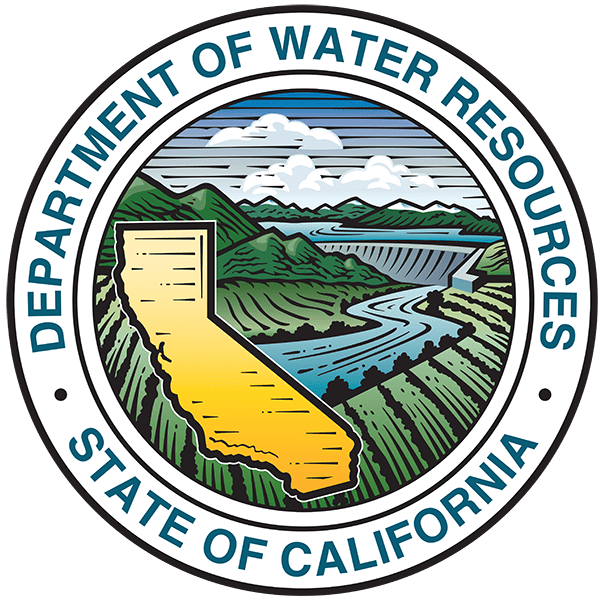From the Department of Water Resources:
Department of Water Resources snow surveyors today found the Sierra snowpack boosted by late-season storms, but still far below normal as the spring melt fast approaches.
Coupled with this winter’s scant rainfall, the meager snowpack — containing only 32 percent of average water content for the date – promises a gloomy summer for California farms and many communities.
“We’re already seeing farmland fallowed and cities scrambling for water supplies,” said DWR Director Mark Cowin. “We can hope that conditions improve, but time is running out and conservation is the only tool we have against nature’s whim.”
(Visit Drought.Ca.Gov for an update on how the state is dealing with the drought.)
After a bone dry December and January, February and March storms brought some promise to the state, but have not broken the drought’s three-year grip as reservoirs, rainfall totals and the snowpack remain critically low.
Today’s manual and electronic readings – at the time of year the snowpack normally is at its peak before melting into streams and reservoirs – record the snowpack’s statewide water content at just 32 percent of average.
Electronic readings indicate that snowpack water content in the state’s northern mountains is 23 percent of normal. The electronic readings for the central and southern Sierra are 38 and 31 percent of normal, respectively.
This is dismal news for farms and cities that normally depend on the snowpack – often called California’s largest reservoir – for a third of their water. And reservoirs are not making up the difference.
Lake Oroville in Butte County, the State Water Project’s (SWP) principal reservoir, is at only 49 percent of its 3.5 million acre-foot capacity (64 percent of its historical average for the date). Shasta Lake north of Redding, California’s and the federal Central Valley Project’s (CVP) largest reservoir, is at 48 percent of its 4.5 million acre-foot capacity (60 percent of its historical average). San Luis Reservoir, a critical south-of-Delta reservoir for both the SWP and CVP, is a mere 42 percent of its 2 million acre-foot capacity (46 percent of average for this time of year) due both to dry weather and Delta pumping restrictions to protect salmon and Delta smelt.
Snow surveyors from DWR and cooperating agencies manually measure snowpack water content on or about the first of the month from January through May to supplement and check the accuracy of real-time electronic readings. This year’s final manual survey is scheduled for May 1.
Results of today’s manual readings by DWR off Highway 50 near Echo Summit are as follows:
Location Elevation
Snow Depth
Water Content
% of Long Term Average
Alpha 7,600 feet
inches
inches
missing
Phillips Station 6,800 feet
33.7 inches
8.1 inches
29
Lyons Creek 6,700 feet
inches
inches
missing
Tamarack Flat 6,500 feet
inches
inches
missing
On January 31, with no relief in sight after the winter’s first snow survey on January 3 found more bare ground than snow, DWR set its allocation of State Water Project water at zero. The allocation has not been increased.
The only previous zero allocation (water delivery estimate) was for agriculture in the drought year of 1991, but cities that year received 30 percent of requested amounts.
Despite the “zero” allocation, DWR has continued to deliver water essential for health and safety and nearly all people and areas served by the State Water Project also have other sources of water.
Deliveries could still be boosted by improving hydrology.
The final State Water Project allocation for calendar year 2013 was 35 percent of the slightly more than 4 million acre-feet requested by the 29 public agencies that collectively supply more than 25 million people and nearly a million acres of irrigated farmland. In 2012, the final allocation was 65 percent of the requested 4 million acre-feet. It was 80 percent in 2011, up dramatically from an initial allocation of 25 percent. The final allocation was 50 percent in 2010, 40 percent in 2009, 35 percent in 2008, and 60 percent in 2007. The last 100 percent allocation – difficult to achieve even in wet years because of Delta pumping restrictions to protect threatened and endangered fish – was in 2006.
Although 2013 was the driest calendar year on record for much of California, last-minute November and December storms in 2012 – the first year of the current drought – replenished major reservoirs to somewhat mitigate dry conditions. That comfortable reservoir cushion is now gone.
This year is on track to perhaps be California’s fifth or sixth driest year, with its final ranking to be determined.
Electronic snowpack readings are available on the Internet at:
Electronic reservoir readings may be found at:
For a broader snapshot of current and historical weather conditions, see DWR’s “Water Conditions” and “Drought” pages:
- Water Conditions Page: http://www.water.ca.gov/waterconditions/
- Drought Page: http://www.water.ca.gov/waterconditions/drought/
The Department of Water Resources operates and maintains the State Water Project, provides dam safety and flood control and inspection services, assists local water districts in water management and water conservation planning, and plans for future statewide water needs.
(Note: Originally published on April 1 at 1:32 pm. Time stamp was changed to reposition the post on the front page.)
——————————————–
Get the Notebook blog by email and never miss a post!
- Sign up for daily emails and get all the Notebook’s aggregated and original water news content delivered to your email box by 9AM. Breaking news alerts like this one, too. Sign me up!
 Maven’s Notebook
Maven’s Notebook
constantly watching over the world of California water


